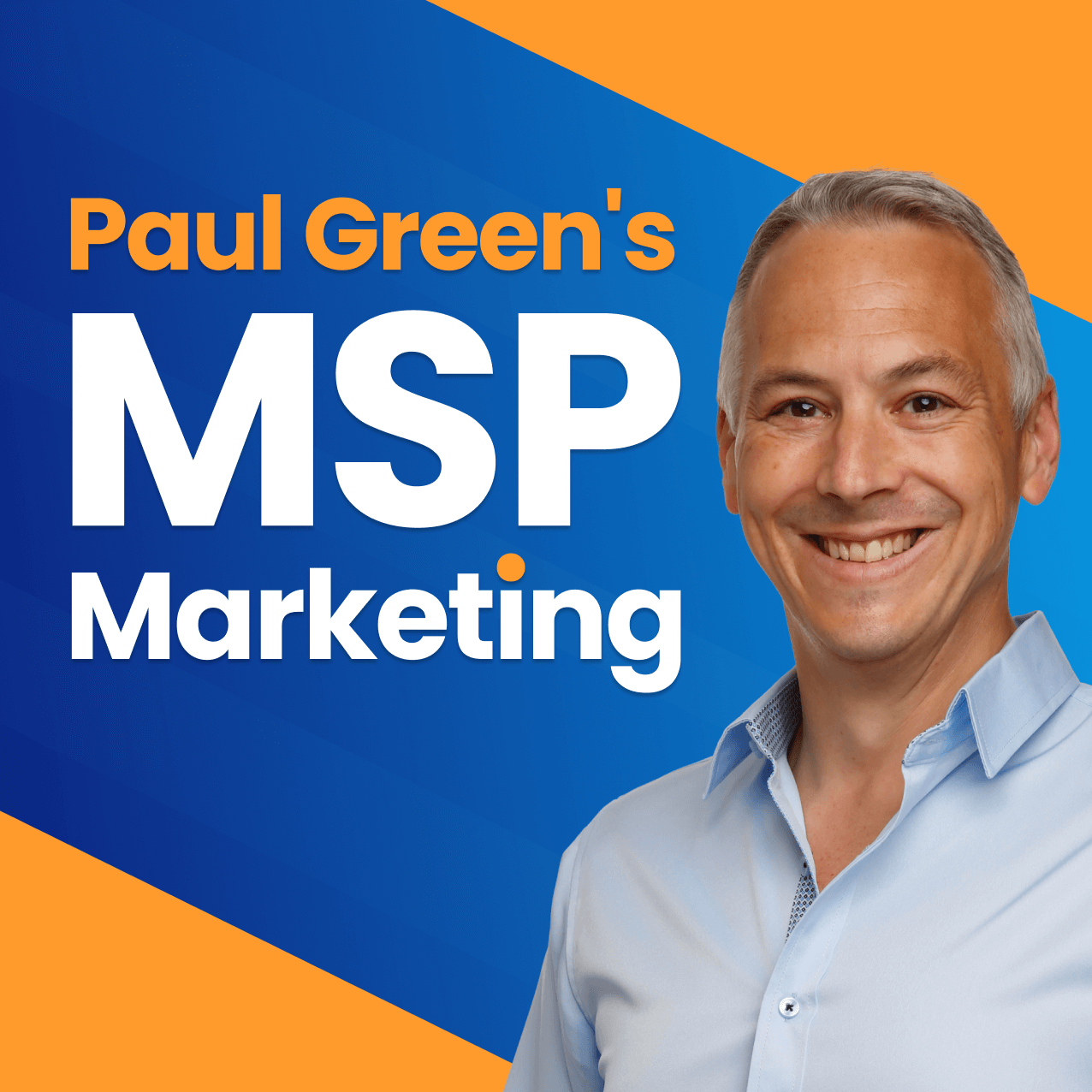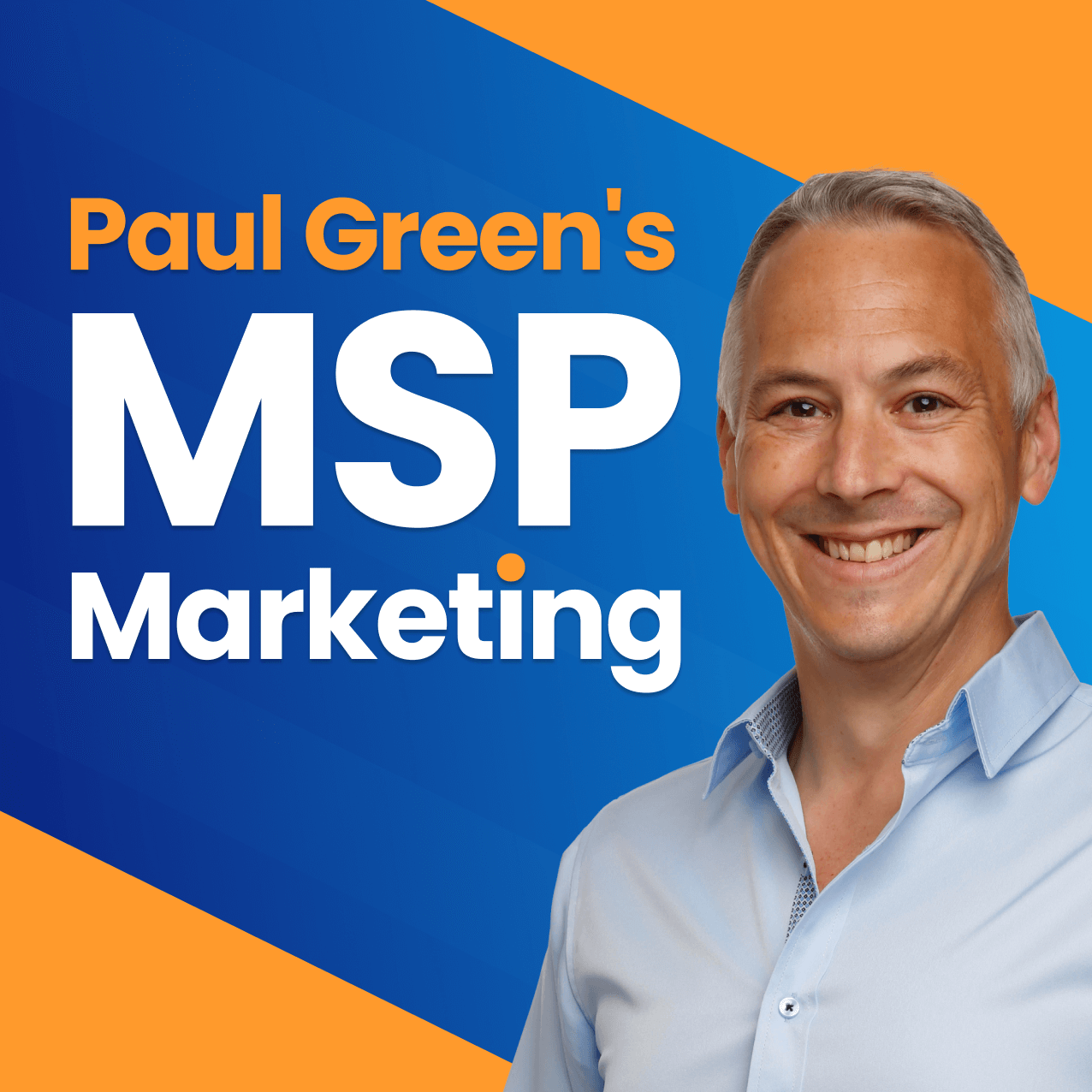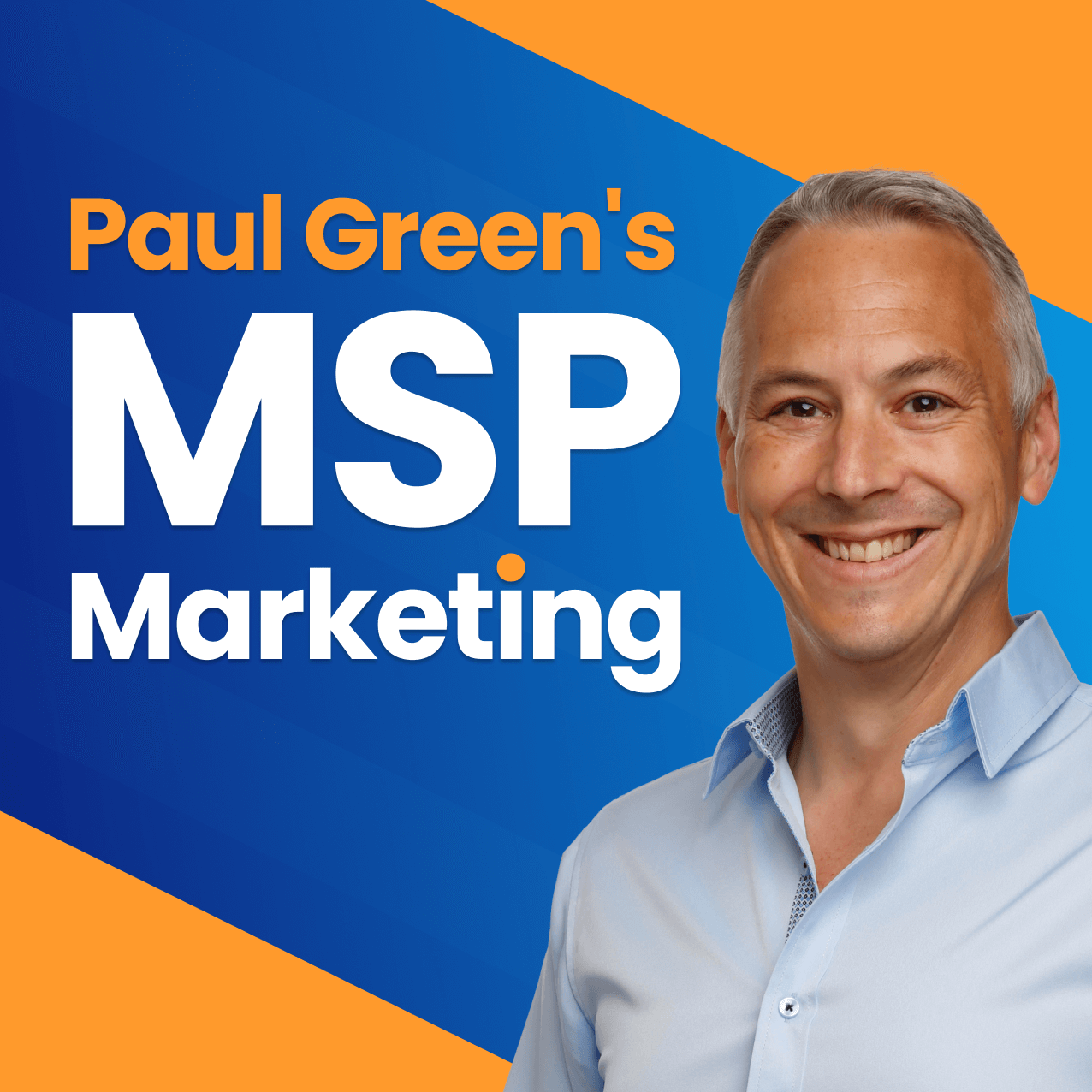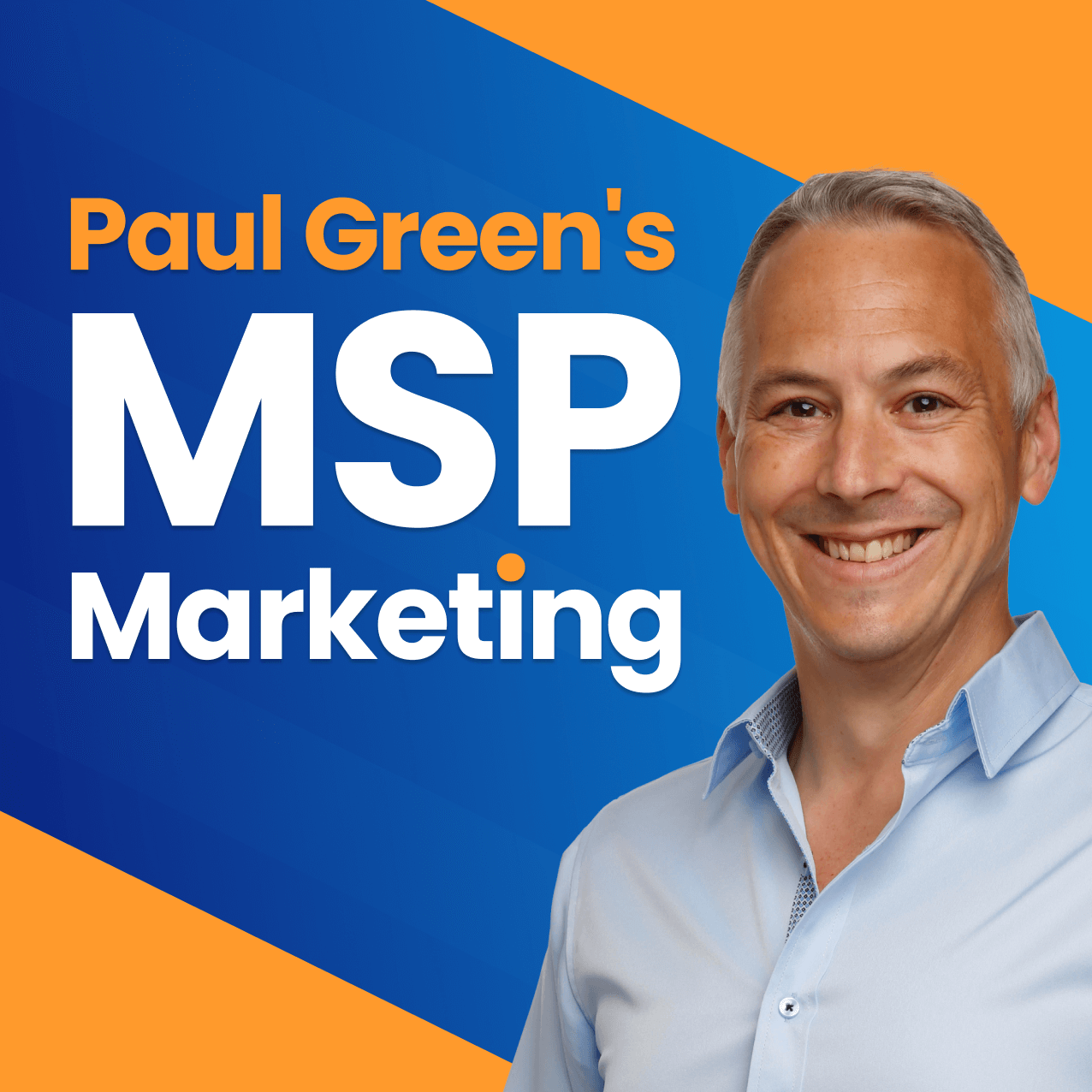ICP: Jargon or a powerful MSP marketing tool?
Description
The podcast powered by the MSP Marketing Edge
Welcome to Episode 298 of the MSP Marketing Podcast with me, Paul Green. This week…
- ICP: Jargon or a powerful MSP marketing tool?: Your MSP’s Ideal Customer Profile is a clear picture of the type of business that you want more of. When you’re clear on who you are targeting, everything else becomes easier.
- MSPs: How to never drop a ball (no matter how busy you are): If you want to run the best MSP you can and find new clients at the same time without the fear of ever dropping the ball, you need to get this system into your life.
- AI is changing EVERYTHING with your MSP’s website: Websites that were perfectly optimised for Google just a few years back are now not good enough for the age of AI. My guest explains what MSP’s should be considering now and in the future.
- Paul’s Personal Peer Group: Ever wonder whether you should be sending promotional emails as plain text or HTML? I have a very clear answer to this…
ICP: Jargon or a powerful MSP marketing tool?
Just like in the tech world, marketing is full of confusing sounding acronyms. There’s your LTV, your CTR and your PPC, but while you can safely ignore those, there’s one that you must not ignore. Perhaps you’ve heard of it already. When you get this acronym right, it influences all of your MSP’s marketing and you get better results. Let’s talk about this acronym that you must be aware of and how implementing it in your MSP will help you win brand new clients.
So we’re going to talk about something called an ICP, which stands for Ideal Customer Profile. And don’t worry, this isn’t going to be some kind of big scary marketing concept. It’s actually really simple and it can make a massive difference to how effective your MSP’s marketing is. So what’s an ICP? Think of it like this.
If you could clone your best customer – the one who always pays on time, never complains, values what you do, and is a dream to work with – who would that be?
That’s what sits at the heart of your ideal customer profile. It’s a clear picture of the type of business that you want more of. And I’m not just talking about the vague stuff like saying small businesses or anybody with computers and a wallet. I mean details like what industry they’re in, how many staff they have, where they’re based, what kind of technology they use, who makes the buying decisions, and even what headaches are they dealing with right now that you can solve?
Why do you bother with all of this? Because when you are clear on who you are targeting, everything else becomes easier. Your marketing becomes sharper, your messaging really hits home. You stop wasting your time chasing leads that when never a good fit in the first place because you understand exactly who you want to work with. It’s like fishing with a rod rather than chucking a net into the sea and hoping to get a very specific kind of fish.
So how do you build your ICP? Well, I suggest that you start with your current clients. Have a good look at them, analyse them. It could just be while you take the dog for a walk, you don’t need to sit down and stare at a screen for another six hours, but just think it through. Who are your best clients? Who are the ones that you wish you had 10 more of? Write down what it is that makes them great. Look for the patterns. Is it that they’re all in professional services? Do they all have a round about 15, 20 staff? Do they all hate dealing with IT and they just want someone to handle it all for them and they’re willing to pay for that person? What are the things they have in common? Your best clients. And then turn that into a profile. And you might find yourself saying something like, We help 10 to 50 person accountancy firms in the southeast who are growing fast and who need reliable IT support, but they really don’t want to do it in-house.

That in itself could be your ICP, just that statement. It doesn’t have to be a massive document that you’re never going to look at ever again. And once you’ve got something as simple as that statement, then everything you do in your marketing points you towards attracting more of that kind of business. On your websites, your LinkedIn posts, your emails, they all need to speak directly to the people that you actually want as clients.
Let me give you a specific example of an MSP with a really clear ICP. So they work with dental practices, specifically private practices with between five and 20 staff that are based in their specific geographical area plus 50 miles. Their ideal client isn’t just any dentist, it’s a dentist that uses digital X-ray systems, has a receptionist who struggles with slow computers, and the owner hates IT and hates dealing with it. So that MSP positions themselves as the go-to IT provider for dental practices in that region. And their website talks about IT that keeps your practice running smoothly, even when the x-ray software doesn’t. Because that directly talks to people who are using digital x-rays. They go to dental conferences, they’ve even written a guide called the IT survival kit for busy dentists, and they’re not trying to be everything to everyone. In fact, they’re not even trying to be everything to every dentist. Because of that, they attract exactly the kind of clients that they want. Clients that are profitable, they’re easy to support and they stay for years. That’s the power of a really good ICP.
So quick recap for you, ICP means ideal customer profile and it helps you to focus on the right kind of clients. Start by cloning your best current clients and then use that insight to sharpen up all of your marketing. Very simple, very powerful. It’s going to save you a ton of time and move you a lot closer to winning new clients.
Does this happen to you during the day? You’re just trying to run the best MSP you can and of course, hopefully find some new clients, but come the evening, you’re trying to chill out and then all of a sudden your brain goes into overdrive. Did I send that proposal? Did I do that thing that I promised a client or did I forget it? If you want to run the best MSP you can and find new clients at the same time without the fear of ever dropping the ball, you need to get this system into your life.
Sometimes the hallmark of a business owner is that we pride ourselves on our busyness as much as on our business. Most of the MSP owners that I’ve met are very high performing individuals and I think this is why we get frustrated with our staff and other mere mortals who can’t do what we do at the pace that we do it. But even you and I have our limits and I know that I’m approaching mine right now. I’ve got several projects which all seem to be concluding at the same time. Home life’s getting really busier. My child is doing loads of stuff that needs transport and organising and thinking, and I am about to take an impending vacation, a short break, which is kind of clashing with a project deadline. And it’s all adding pressure. Yes, this recording is my way of getting counseling, thanks very much for being there for me. But actually no matter how busy I get, I rarely drop a ball, which is a very dangerous thing to claim in public, and I certainly don’t get everything done when I say I will. But I am able to make conscious decisions about what needs to be done now and what can be safely postponed.
I’ve used a simple but powerful productivity system for years and it helps me to prioritise what’s most important… what’s going to get me closer to my life goals.
I’ve distilled it down to six key things:
The first is to set very clear goals and review them every single day. Literally, one of the first things I do every day is to read my goals book, even at the weekend I do this. And if you don’t have written goals which are constantly top of your mind, you kind of can’t be more productive because true productivity is about doing less, not more, which means prioritising more. You’ve got to know what you’ve got to do to get you to the place you want to go. So my goals book contains my vision board. It’s a series of pictures representing the things that I want in my life in the near future. So there’s a picture of the house that I’m going to own next, a picture of the car that’ll sit on the gravel driveway of the house. There’s a picture of the villa somewhere hot, probably Portugal where I’ll be enjoying 10 weeks of the school holidays. All of that kind of stuff is on there. And then on the next page of the book is a summary of my key goals for the year. Each containing three bullet points on my strategy to achieve those goals. And I tweak these as we go throughout the year, but achieving each of these business goals gets me so much closer to my life goals. So fo









